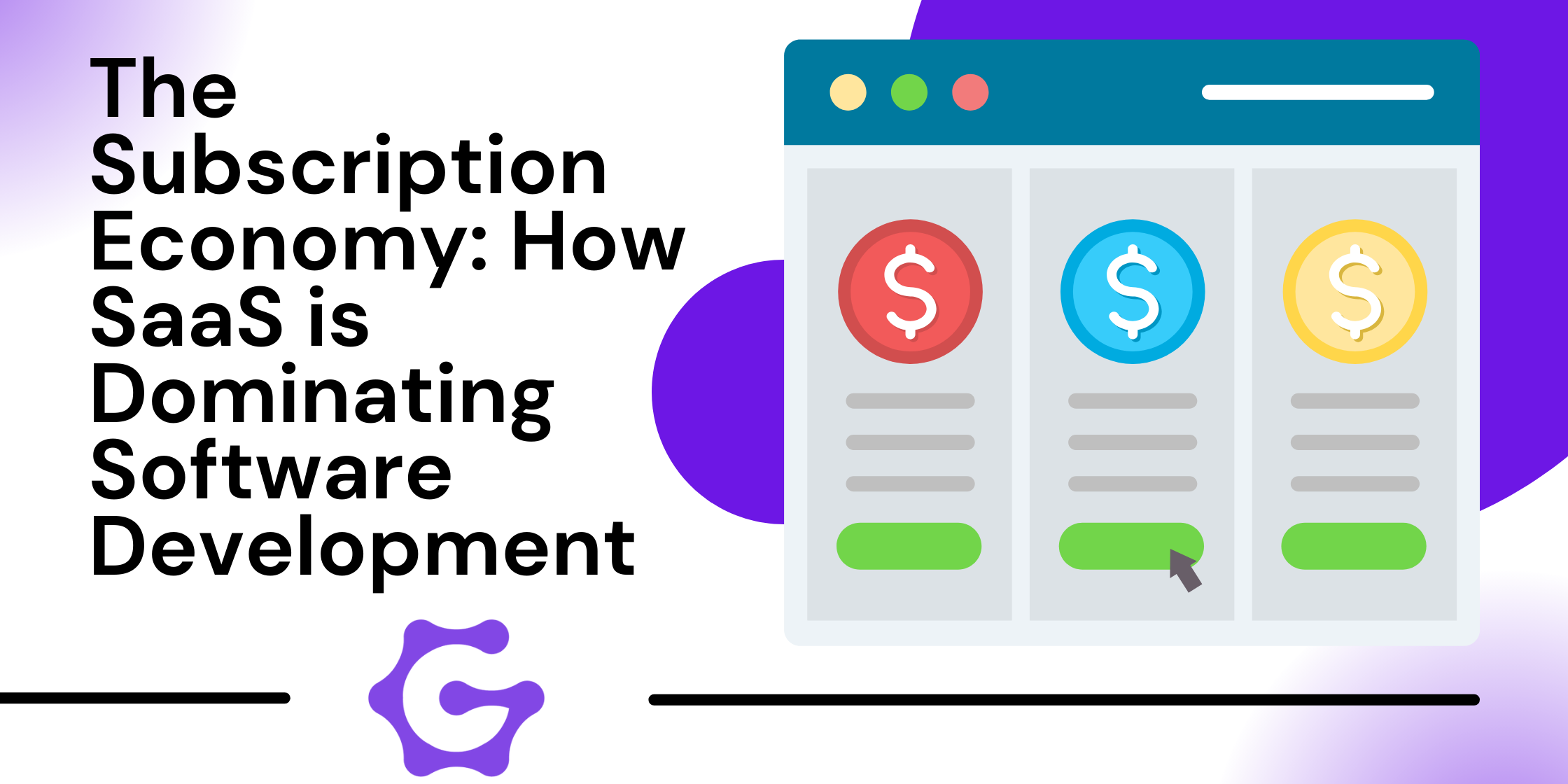SaaS: Leading the Subscription Economy in Software

Tired of wrangling all those damn software licenses year after year? So are we. Here’s a cleaner approach: Software as a Service (SaaS). It’s the driving force behind the subscription economy, where businesses are moving away from one-time sales and embracing recurring revenue. It means fewer “license renewal” nightmares for everybody. Below, we’ll show you how SaaS changes software development, why it’s the future, and what it means for you.
The Subscription Economy: More Than Monthly Fees
Yes, the subscription economy is a big deal—and not just for TV streaming. In software, it offers predictable income for developers and flexible entry points for users.
- Stable Revenue: When customers pay monthly or annually, you can plan your roadmap without gambling the year’s budget on a single “launch and pray” cycle.
- Scalability: If you suddenly get ten thousand new users, you ramp up server capacity—no forklift upgrades or big capital outlays.
- Consistent Engagement: Subscription models motivate you to deliver continuous value—otherwise, users leave. It keeps software fresh and user-focused.
SaaS Business Model: Why It Works
The SaaS business model is straightforward: host your application on the cloud, charge periodic fees, and roll out updates whenever necessary.
- Low Barriers for Users: Customers avoid a massive upfront cost. With SaaS, they pay as they go, or as they grow, which broadens your market.
- Continuous Feedback Loop: Real-time usage stats let you refine features or fix bugs on the fly—no “service packs” or manual patches needed.
- On-Demand Upgrades: Update at will. No forced re-installs. Users log in, get the new version, and carry on.
Note: Frequent updates keep customers engaged—and on the hook for that subscription. If your dev team is into user-first design, SaaS encourages a healthy back-and-forth.
Software Development Trends 2025: Where SaaS Fits
Looking ahead, there’s more than hype at play. The next wave of software development underscores cloud-based movement ability, user-centric design, and built-in security.
- AI & Automation: SaaS offerings will increasingly bundle machine learning to automate workflows—meaning fewer manual tasks, and more real-time insights.
- Microservices: Rather than one bloated app, devs prefer modular pieces. Scalable. Easier to maintain. Ideal for subscription-based expansions.
- Security as a Core Feature: Data breaches haven’t slowed down. SaaS platforms need robust encryption, continuous monitoring, and easy compliance out of the box
Why It Matters: By 2025, software that doesn’t evolve quickly and seamlessly won’t stand a chance. SaaS is a shortcut to that level of agility.
What’s in It for Your Business?
SaaS isn’t just a trendy revenue model. It simplifies maintenance, updates, and user acquisition. Less friction, more loyalty.
- Reduced Friction: Users pay per month or year, so no large capital requests or dreaded licensing negotiations.
- Loyalty Through Continuous Value: Keep rolling out improvements, and customers see a reason to stick around.
- Easier Scaling: Add new features as optional upgrades or higher-tier plans—no need for a re-launch or messy re-install.
Personal Take: If you’re tired of “ship it and forget it,” subscription models transform the dev cycle into an ongoing relationship. Users remain engaged, and you get constant feedback that drives improvement.
Final Thoughts
The subscription economy is bigger than streaming services. SaaS sits at its core, redefining how we develop, deliver, and monetize software. And with software development trends 2025 heavily emphasizing cloud agility, iterative updates, and security, the subscription path stands out as the logical next step.
Gone are the days of shipping version 1.0 and hoping for a quick paycheck. Now, it’s about generating (and maintaining) momentum—and your users’ interest—for the long haul. Embrace SaaS, keep those updates rolling, and watch how steady revenue and user satisfaction can finally align.